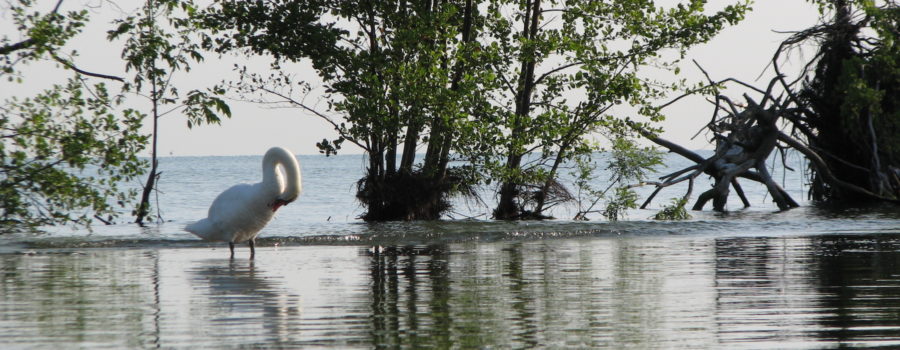In our previous posts, we have discussed the changing water levels of the Great Lakes and how these fluctuations could cause damage to the shorelines, specifically in the Niagara Region. To minimize the damage to these areas, we can utilize adaptation strategies, such as living shorelines, that work with natural processes to protect and sustain our waterfront.
Living shorelines, also known as natural shorelines, are an adaptation strategy that involves the creation of a natural shoreline rich in vegetation that can develop strong root systems. The naturalization of shorelines often requires minimal maintenance and, although it requires a large up-front cost, is often cost-effective over the long-term.
The vegetation acts as a buffer between the water and land and has many long-term benefits. By adding vegetation to shorelines, the roots of these plants will help hold the soil and prevent erosion while also filtering the runoff that flows from the land into the lake. Filtration of runoff reduces the amount of pollution reaching the lakes and can contribute to fewer algae blooms while also maintaining higher water quality. The buffer that is created from this vegetation also prevents flooding. The plants help to slow the velocity of water, allowing it to absorb into the soil instead of coming on to the shore, preventing further damage.
The natural beauty of living shorelines can also increase the property value of residential areas and create wildlife habitat. This is beneficial for conservation, as more than 70 per cent of land-based wildlife and 90 per cent of aquatic life depend on shorelines at some point in their lives. The shade that is created from shoreline vegetation can also be helpful in moderating temperatures. This is beneficial for plants as a lower temperatures equates to lower levels of water evaporation and healthier plants overall.
While there are many benefits that can be provided by a living shoreline, it is important to ensure proper planning is undertaken before creating this naturalization. It is essential to both determine the conditions of your land as well as create a layout of your proposed changes to ensure that the area is being used to its full potential. Determining the condition of your land can be done by first looking at any existing vegetation (or lack-there-of) on the property. By determining what existing vegetation is already growing along the shoreline, you can determine things such as the levels of water or moisture in the area, the sun-to-shade ratio, as well as the soil type. This will allow you to plan which new vegetation would be successful for planting in your natural shoreline. You don’t need to be an expert in plant identification to do this, either, as there are many resources available to assist you, such as the Ontario Native Shoreline Plants website. You can also refer to a native plant supplier, who will be able to tell you which plants are most suitable for your property. They will also be able to tell you how, and when, to properly plant each species.
Shoreline change and water level fluctuations are inevitable; however, there are many ways we can help to prevent the damage in these areas. Make sure to check out our next blog, where we will be highlighting a research project that reveals key areas of concern along the Lincoln coastline using maps and photographs.




















